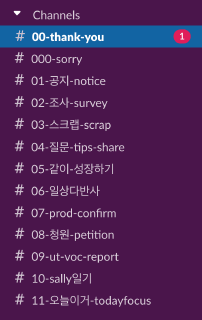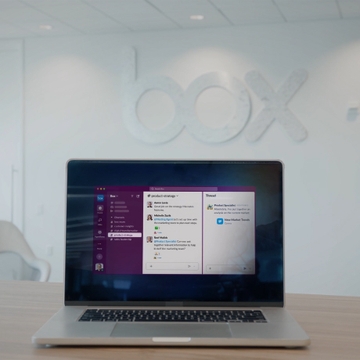The Framework Research and Development Group of Samsung Electronics’s MX (mobile experience) Division is a team of approximately 400 engineers working out of the Suwon and Gumi offices in South Korea. The engineers designed the foundation of One UI, a critical UX component of Samsung’s software for its Galaxy phones, tablets and S Pen. The Framework Group is also responsible for the default system UI, including the lock screen and the keyboard, as well as popular features like the Good Lock.
Leading the group is director Hyesoon (Sally) Jeong, who has been working at Samsung Electronics for 24 years as a software engineer and played a principal role in the successful launch of the Galaxy Fold in 2019. Despite a company culture that can be resistant to external tools or platforms, Framework received official permission to use Slack, which helped the group win Samsung’s Best Organizational Culture Award in 2020 for its highly improved productivity and innovative work culture.

Hyesoon (Sally) Jeong, VP, Framework R&D Group, MX Division, Samsung
The platform behind a happy workplace for developers
Employees at Samsung used to communicate via email or instant messenger, much like workers at other companies. Though convenient, these methods were insufficient when it came to having topic-specific discussions in a timely manner. Jeong had been considering alternatives to address this issue when, in 2018, she tested out Slack at the recommendation of her colleague. She found it to be a one-stop solution to all the limitations of other tools.
She soon became an advocate of Slack, and gradually moved team-based tasks into well-organized Slack channels. Slack has now become a place where the group shares work, life and fun. Two of the most beloved channels are the #10-SallyDiary, with posts from the director herself, and the #13-FWDiary, which features contributions from the entire group.
“I believe in the power of everyday communication,” says Jeong. “Work needs to be formal, but that doesn’t mean the relationship with your colleagues, with whom you spend most of your day, also needs to be formal. In the end, it’s those smiles you share with your colleagues that make you want to come to work and lead to outstanding performance. And that’s exactly what Slack does: it allows you to share those positive, delightful moments with your colleagues.”
Using Slack, the group is building its own digital HQ, where members collaborate closely and enjoyably with one another—not as superiors and subordinates but as colleagues.
“Slack is more than just a tool that improves productivity. It lets all members of the team have fun in the process,” says Jeong, “It’s a place for everyone to come together. It makes collaboration fun, like a game.”
Security and automation persuade MX Division to expand its use of Slack
As with all software companies, Samsung is particularly careful when it comes to security as it develops its IT products, including the Samsung Galaxy. The company is extremely cautious when adopting external tools or software, as was the case when the Framework R&D Group first started using Slack. But after experiencing Slack firsthand, Jeong knew that more groups could benefit from it. So she began proposing the idea to upper management and other divisions. The fact that many other recognized companies with rigorous security protocols had already implemented Slack was her primary selling point.
Automation was also a key aspect, as productivity is a core value in the engineering group. Jeong collected and presented examples of automation in Slack, one of its most powerful features, and shared the real-life feedback of actual developers who enjoyed using Slack. Thanks to these efforts, Slack was well-received within the company. About 5,000 developers in Samsung’s MX Division now use Slack.
Sharing information for a highly engaged workforce
 The Framework Group has systematically configured channels, by far Slack’s most prominent feature, so that all members of the group have access to the same information and knowledge. Back when important information was distributed via email, it would have to be forwarded from one person to another as needed. Not only was this time-consuming, but there was a risk of some people not receiving the email and being left in the dark. Jeong believes that employee engagement is highly dependent on everyone in the group having the same access to information. In fact, lapses in productivity can easily be prevented by using channels in Slack.
The Framework Group has systematically configured channels, by far Slack’s most prominent feature, so that all members of the group have access to the same information and knowledge. Back when important information was distributed via email, it would have to be forwarded from one person to another as needed. Not only was this time-consuming, but there was a risk of some people not receiving the email and being left in the dark. Jeong believes that employee engagement is highly dependent on everyone in the group having the same access to information. In fact, lapses in productivity can easily be prevented by using channels in Slack.
“With Slack channels, everyone in the group has access to the same information and knowledge,” Jeong says. “All the benefits Slack has to offer become apparent with just one try.”
Another cultural change the group attributes to Slack is how people reply to messages. Formal yet unnecessary replies to a work request have now been replaced with emoji, like a ✅ to confirm you’ve read the message or a 👍🏻 to indicate you agree with the suggestion. Communication has become much faster, simpler and livelier.
80+ custom bots developed by the group help improve work culture
The developers at Framework leverage Slack in creative ways. Among the numerous bots the group is currently using, the ones most responsible for shaping a dynamic work culture are the My Star Bot and the Sally Coin Bot. They’re designed to help employees who are often shy about expressing gratitude.
The My Star Bot lets members of the group casually show appreciation by giving out up to five stars a day to people they want to thank. The members who receive the most number of stars are rewarded.
The Sally Coin Bot, on the other hand, lets Jeong give coins to members who make a great contribution to the group or actively share useful information. The coins are a strong motivator, as they can be used to purchase exclusive goods or souvenirs.
Other bots include the Happy News Bot, which delivers keyword-specific news to members who might find the updates useful. There’s the League of Legends Rank Bot, which entertains the team by announcing the rankings in the League of Legends game that Jeong and the members play together as a way of socializing.
The OX Quiz Bot is well-loved by members of the group, since it made team events more fun during the pandemic when they had to be held online. There’s also a Quiz Bot channel that helps build stronger bonds among members of the group.
The R&D group uses Slack bots for work as well. Take the ReviewMonitor, which directly uploads lines of code that need to be reviewed into Slack. Developers conduct the code reviews in Slack with a simple click, without having to open up a separate review tool. A completed review is assigned a “+1” emoji, which is then synced with the system for immediate code review results. The process effectively combines the capabilities of the bot with the talents of the engineering group.
“The group members are going above and beyond my imagination in creating next-level, powerful Slack bots that are both innovative and efficient,” says Jeong. “Currently, the group is using about 80 Slack bots.”
Bots that are highly effective in terms of productivity become popular in the workplace very quickly. The Framework Group recommends and helps set up those bots so that other groups can use them as well. Thanks to these more than 80 Slack bots developed and used by the group itself, the Framework R&D Group was the recipient of Samsung’s Best Organizational Culture Award in the MX Division in 2020.
Lead by example: when leaders use Slack first, they boost productivity
Although Jeong values a horizontal culture for communication and work, she says, “A top-down approach is a must when it comes to implementing work tools or platforms like Slack. Leaders have access to the most information in an organization, so when they share that information through Slack channels, other members naturally gather around that place.”
All tools need to be tested out by leaders themselves in order for them to identify any drawbacks and anticipate potential benefits and side effects in advance. Even a highly beneficial tool can initially be met with objections. Leaders are responsible for designing an appropriate incentive system to build cohesiveness in situations like that.
“I don’t see any reason why organizations over a certain size and scale shouldn’t use Slack,” Jeong says. “Slack is very user-friendly, even for many Korean companies, whose leaders tend to be from older generations. Sharing information and knowledge, collecting opinions and making decisions are all so much easier with Slack channels. Once you start using Slack, you will wonder how you survived without it.”








 mining successful
mining successful






